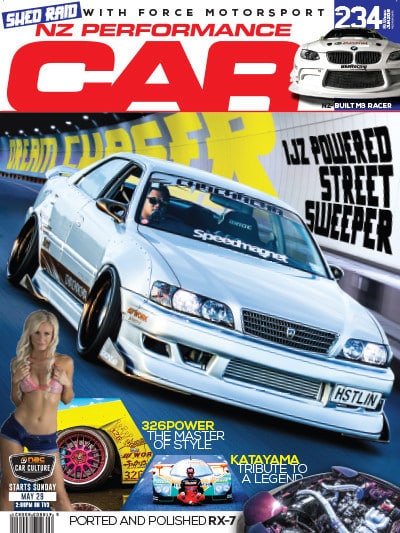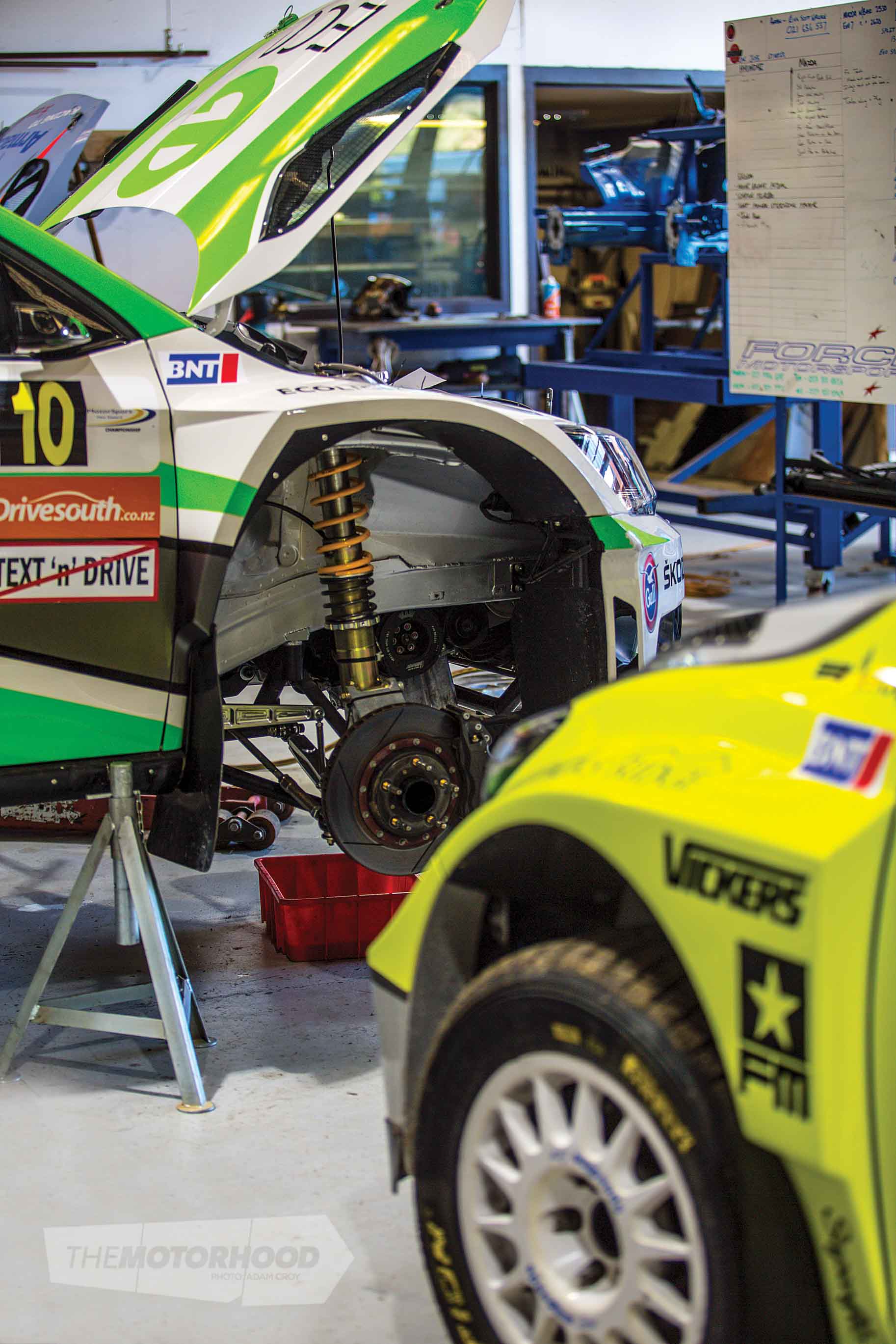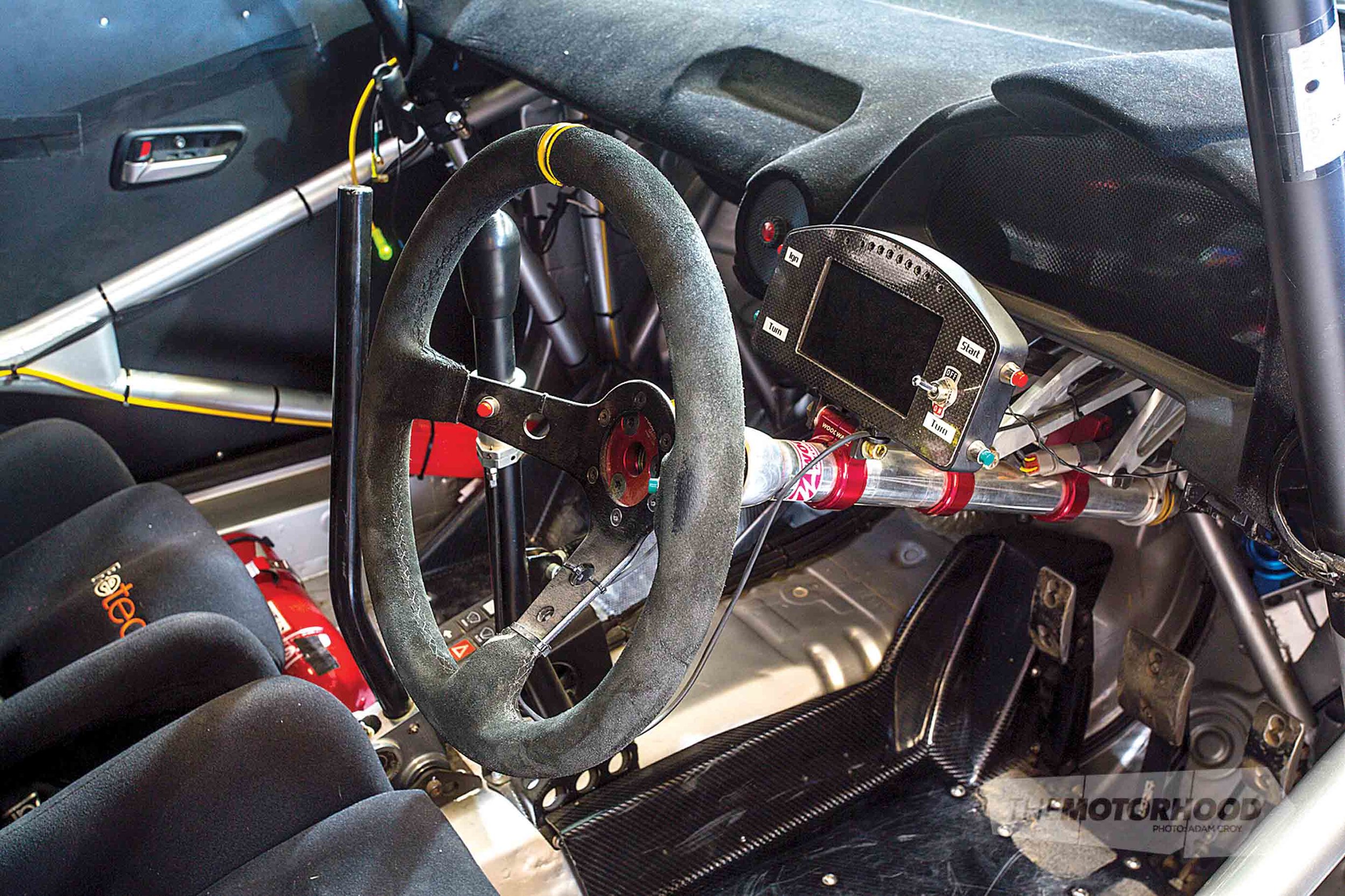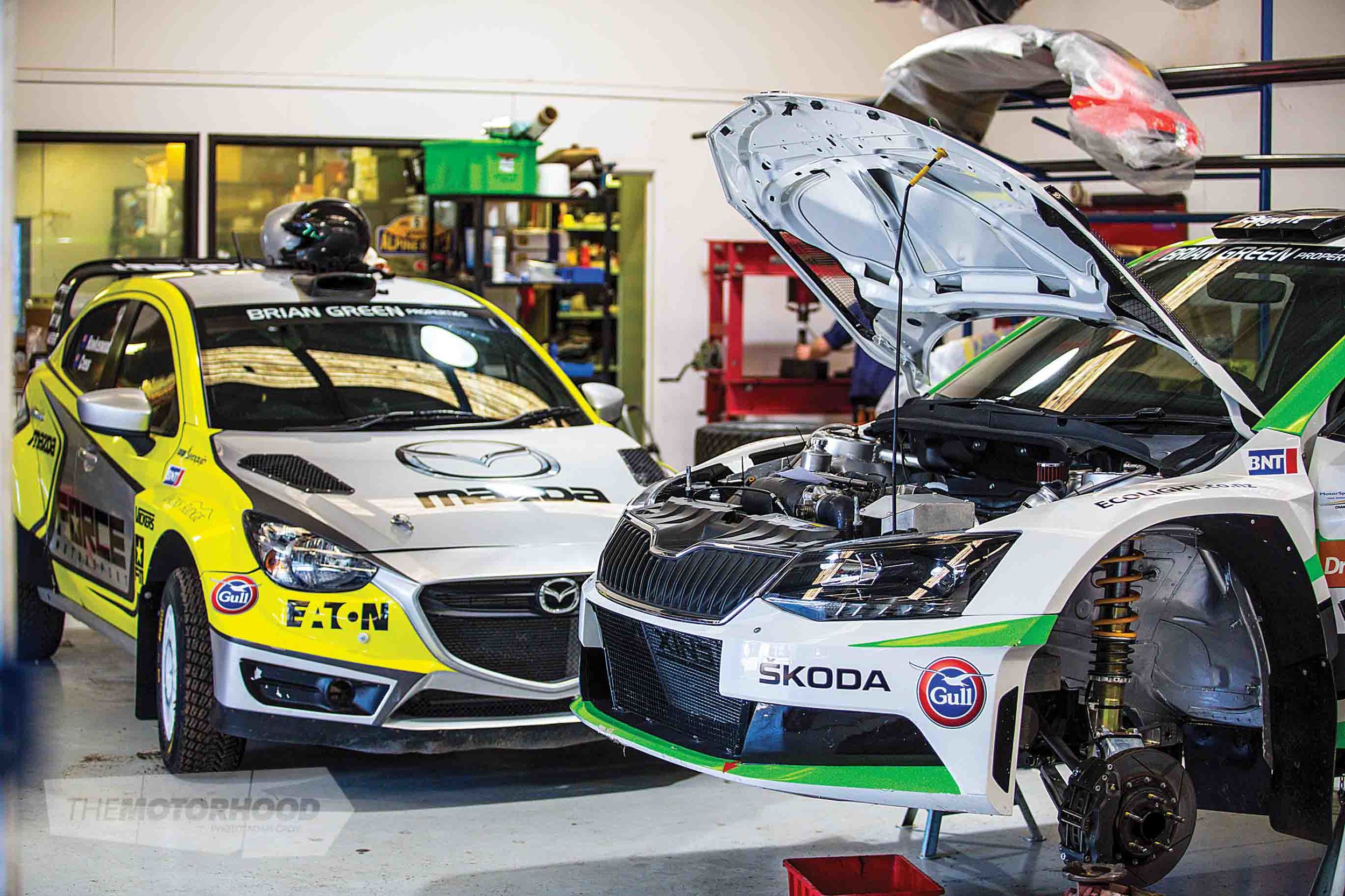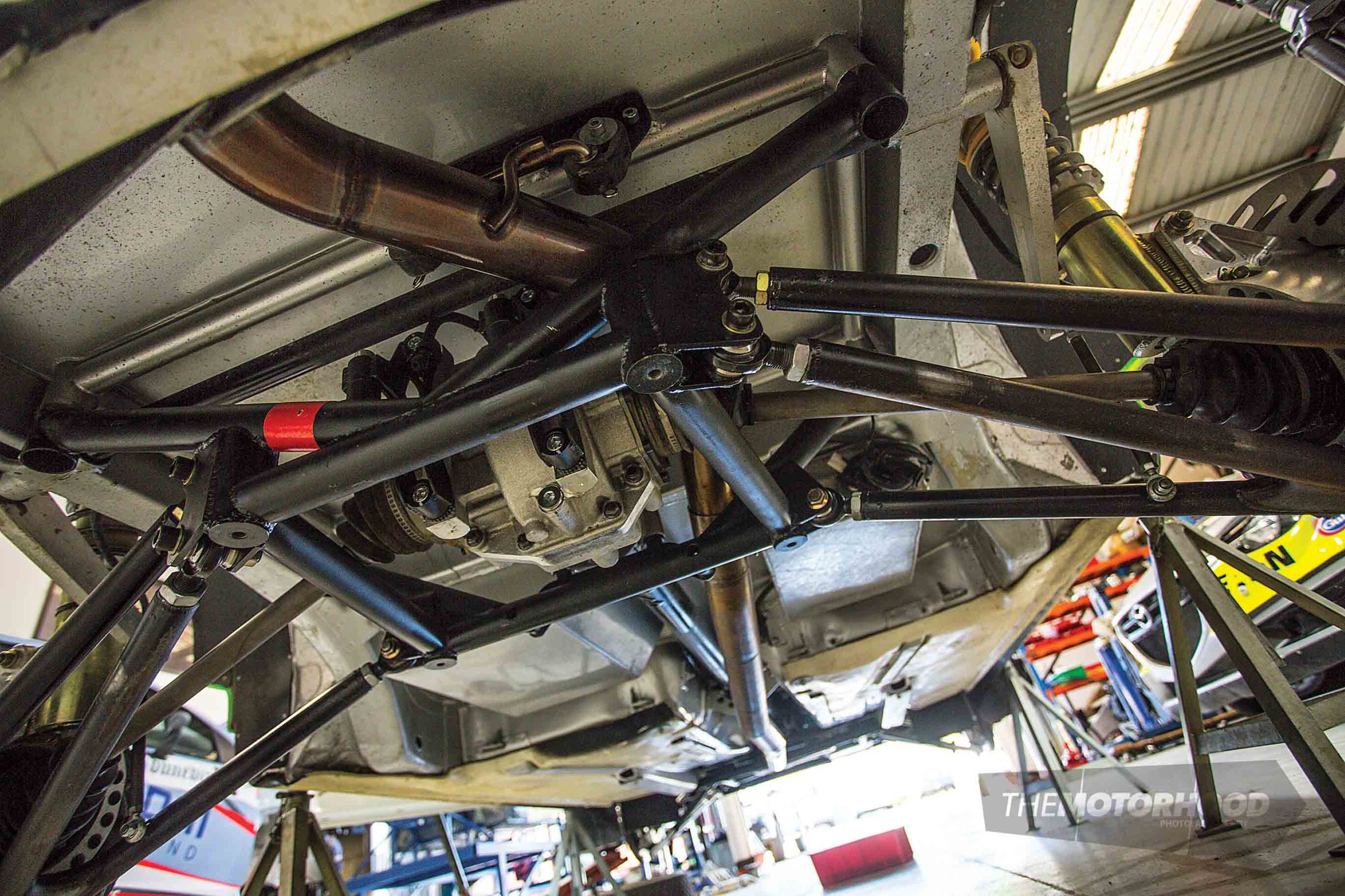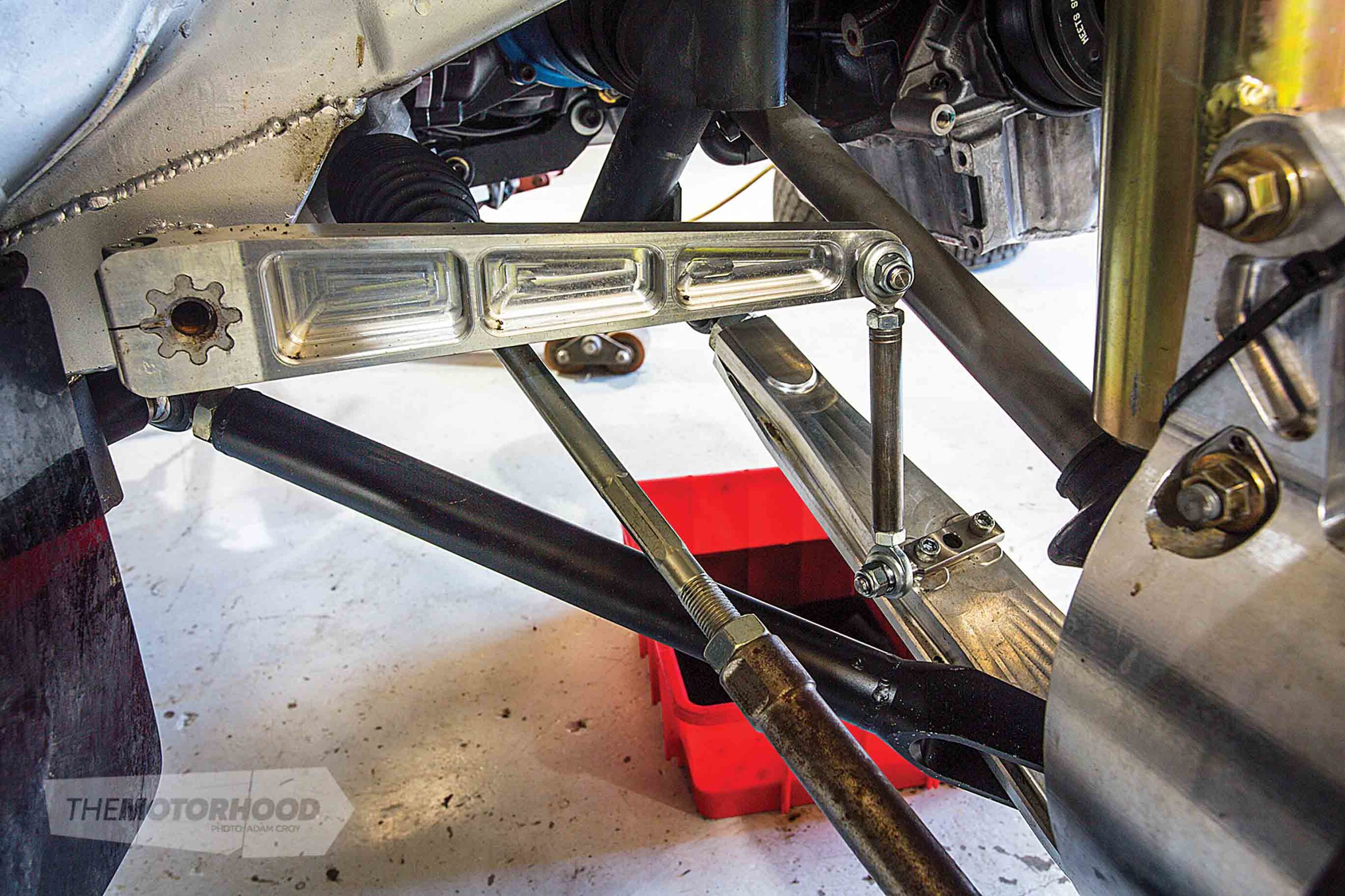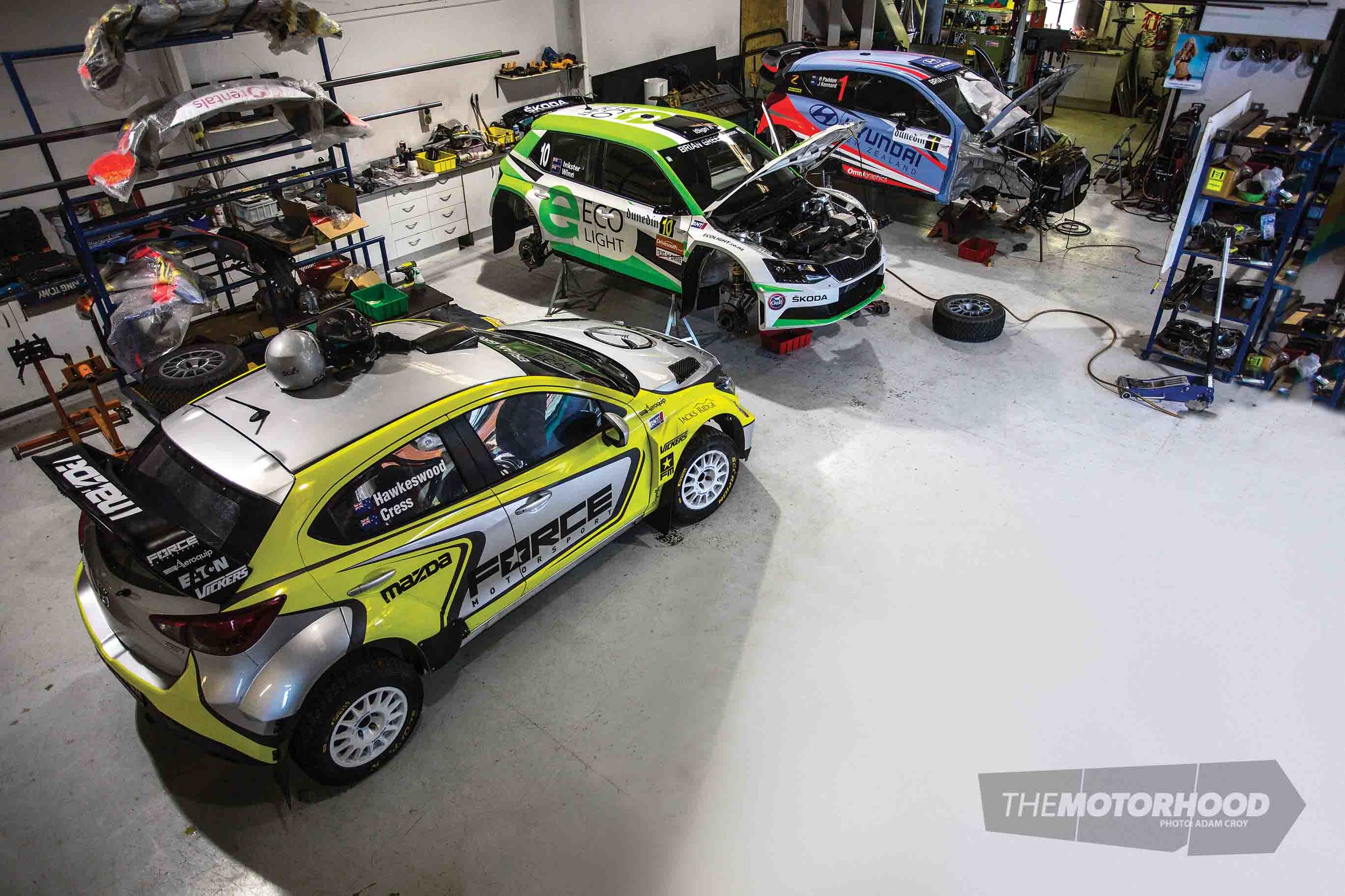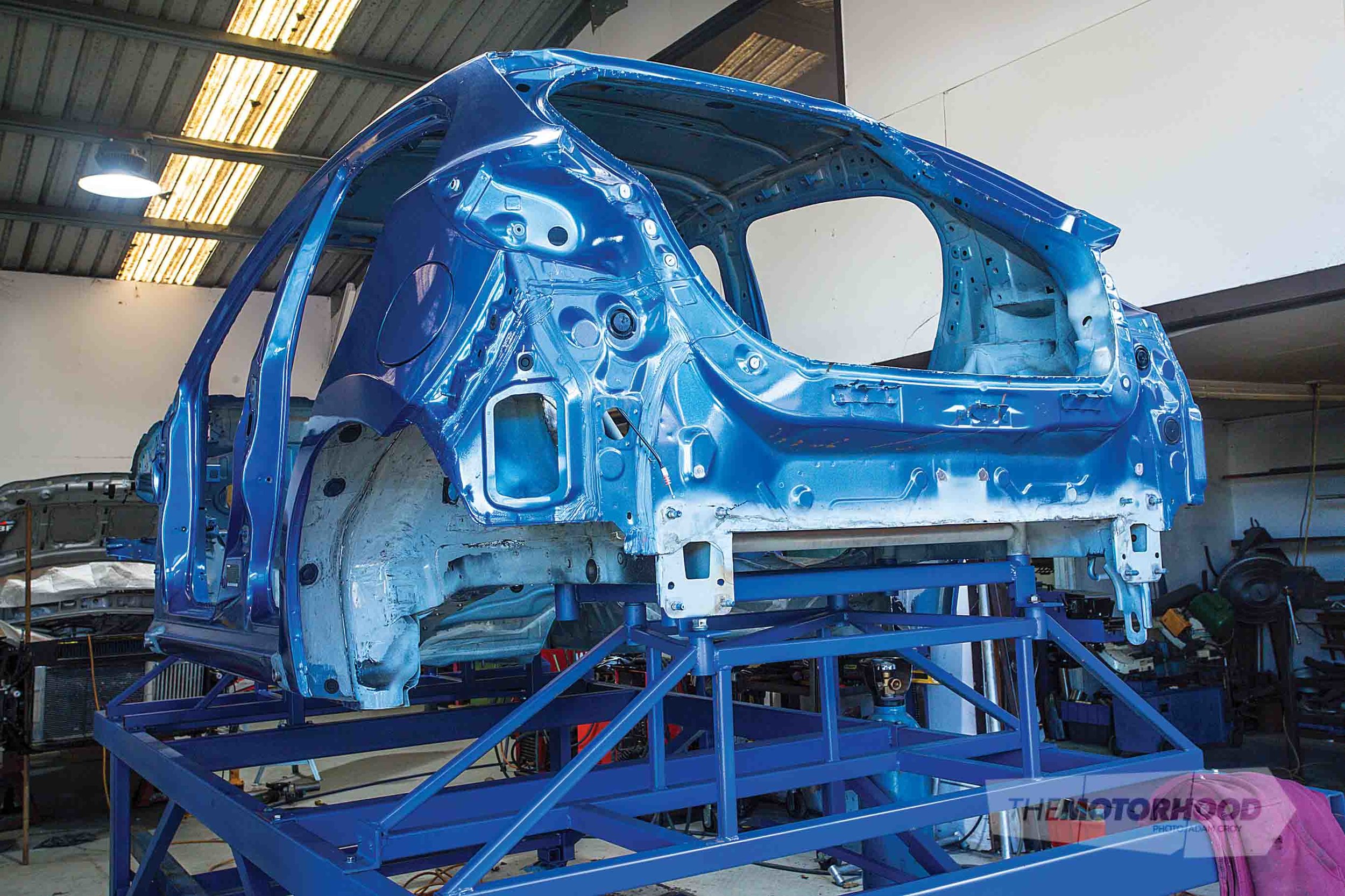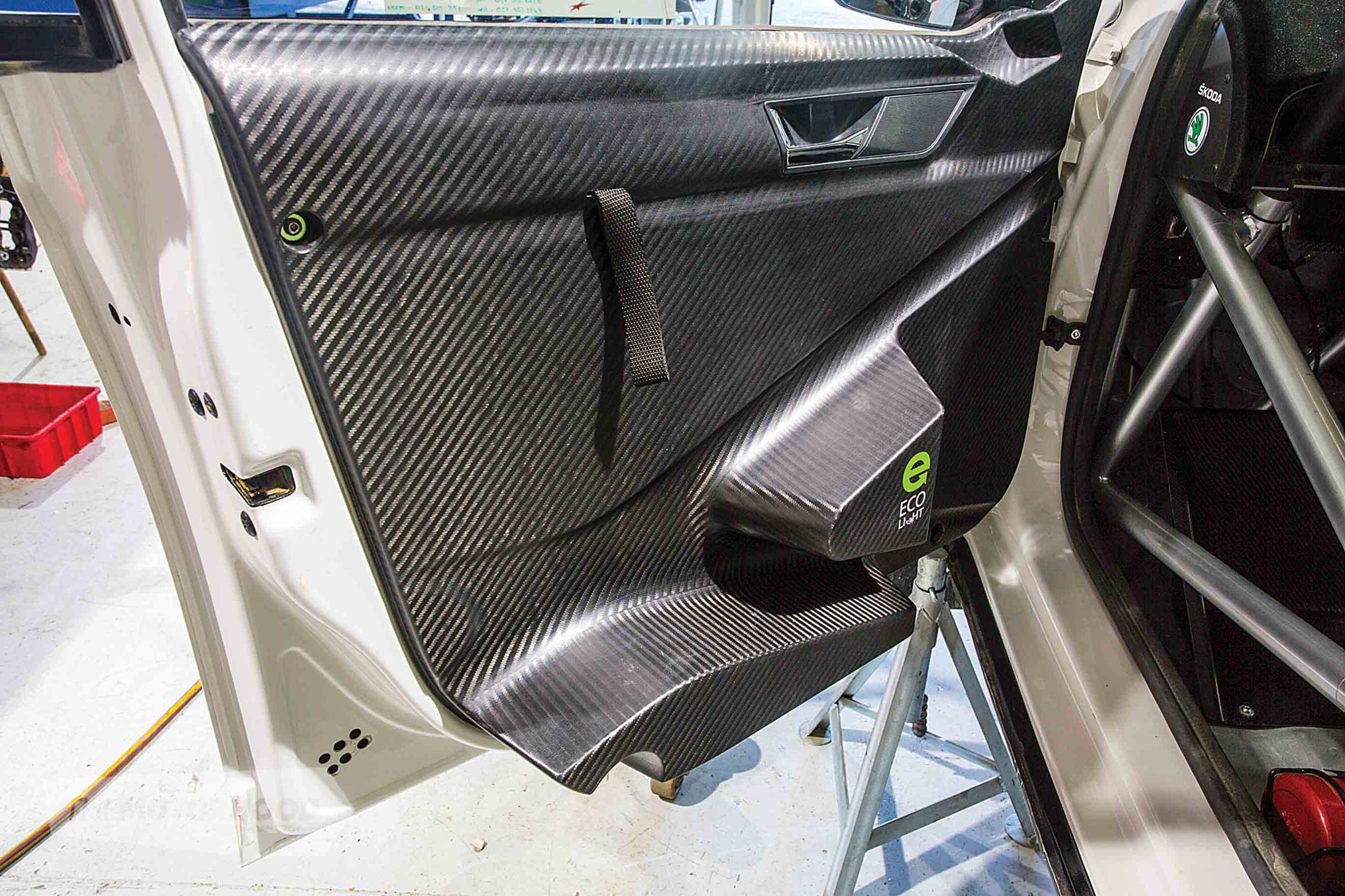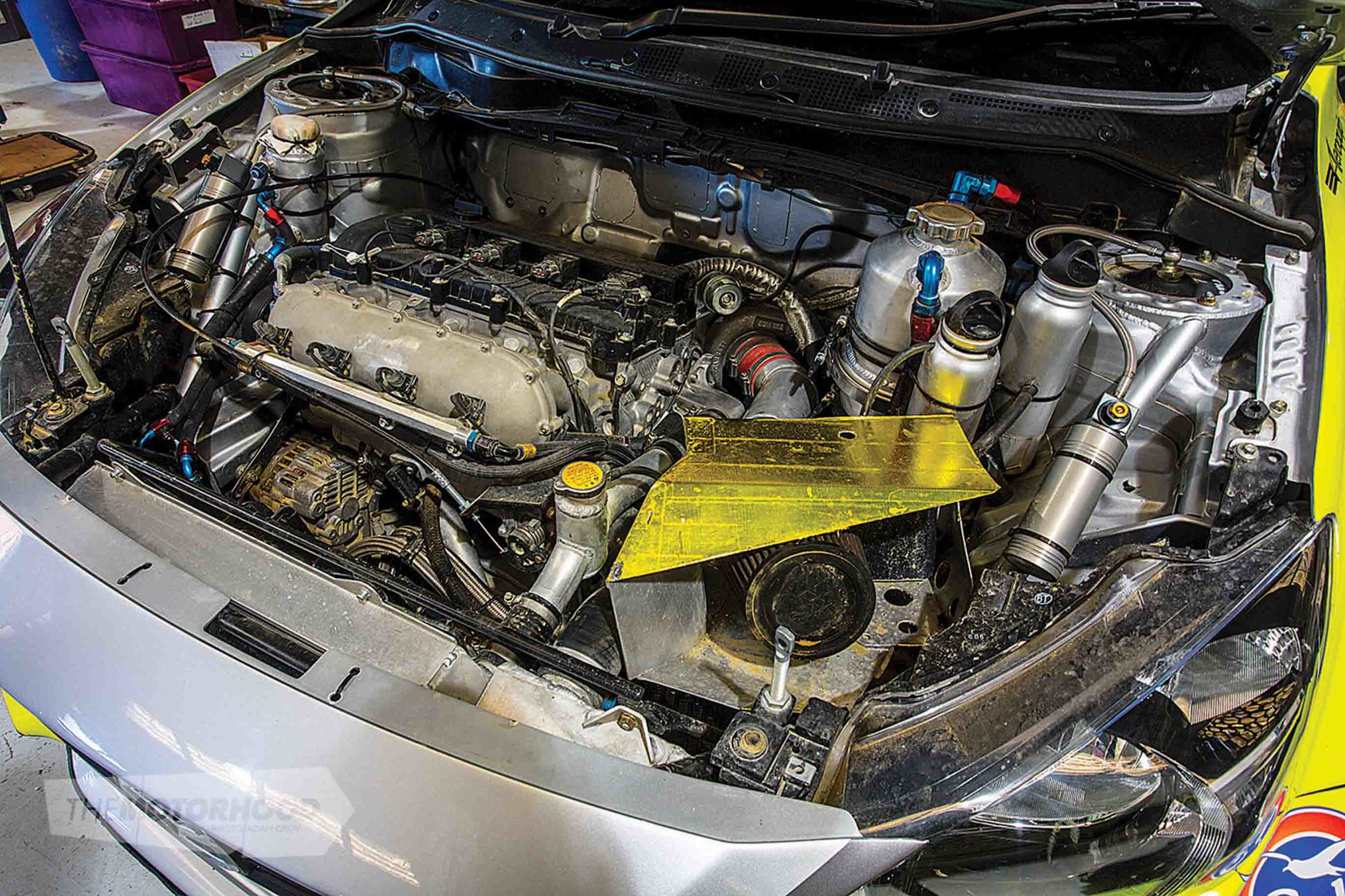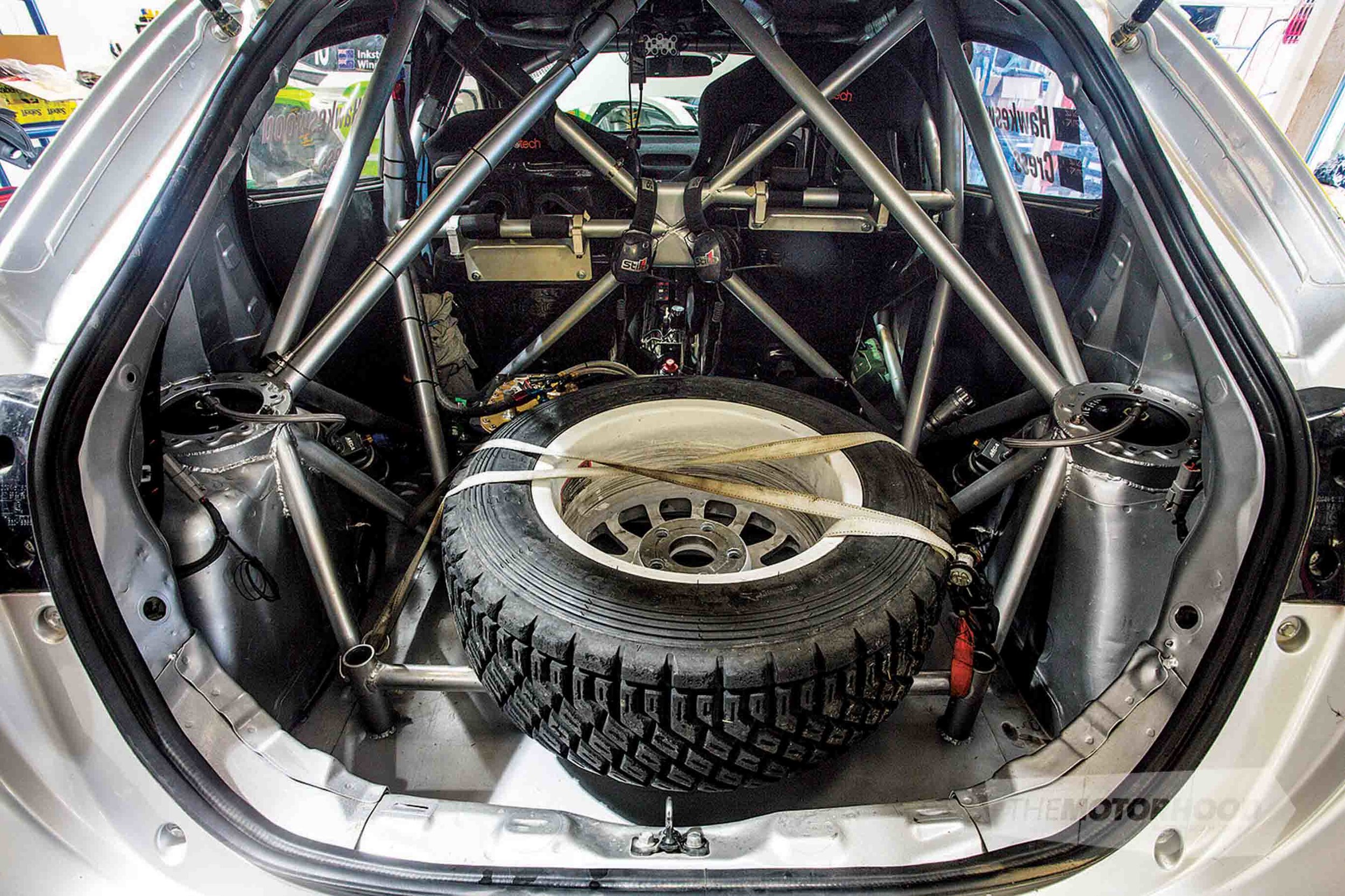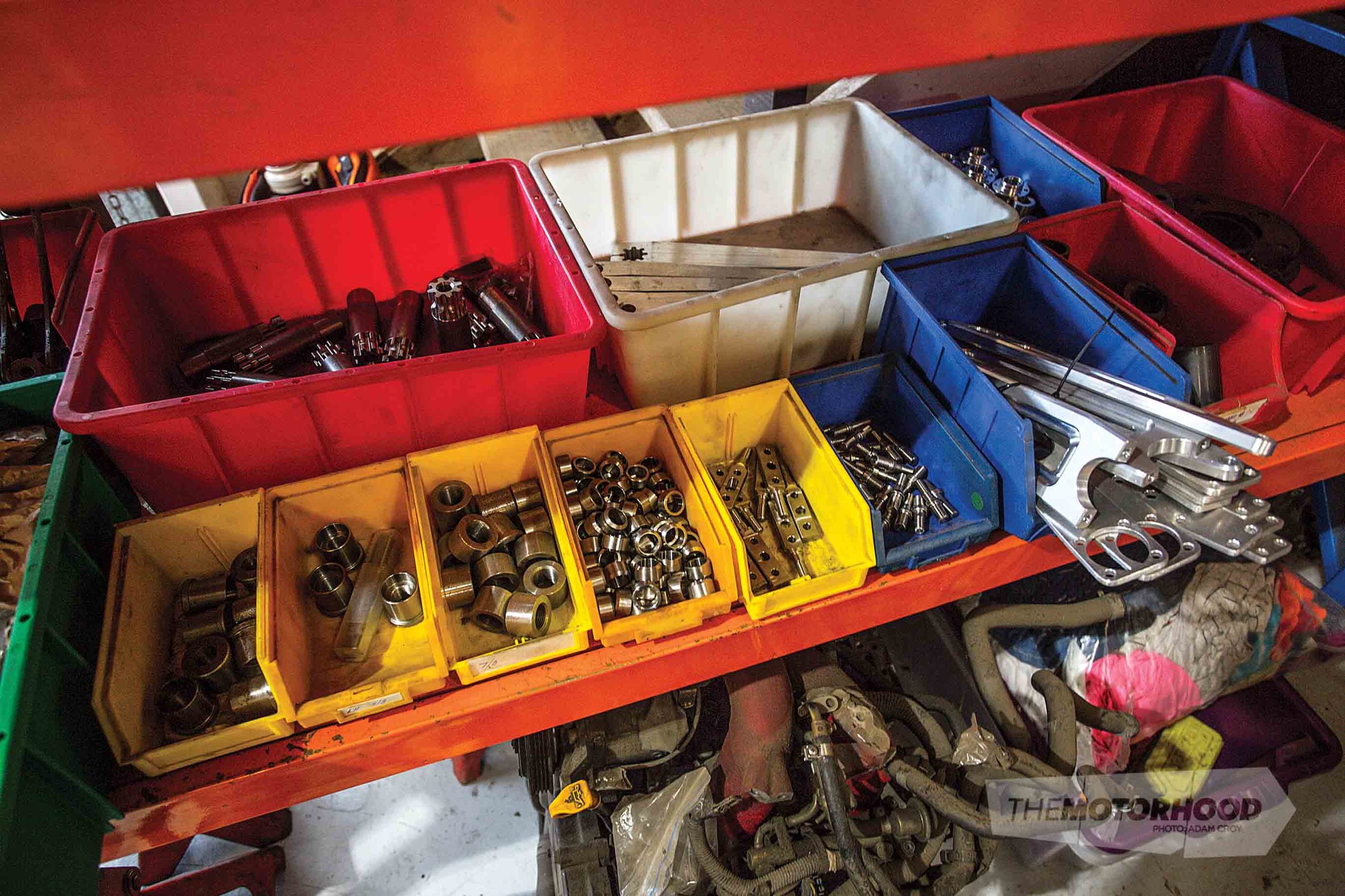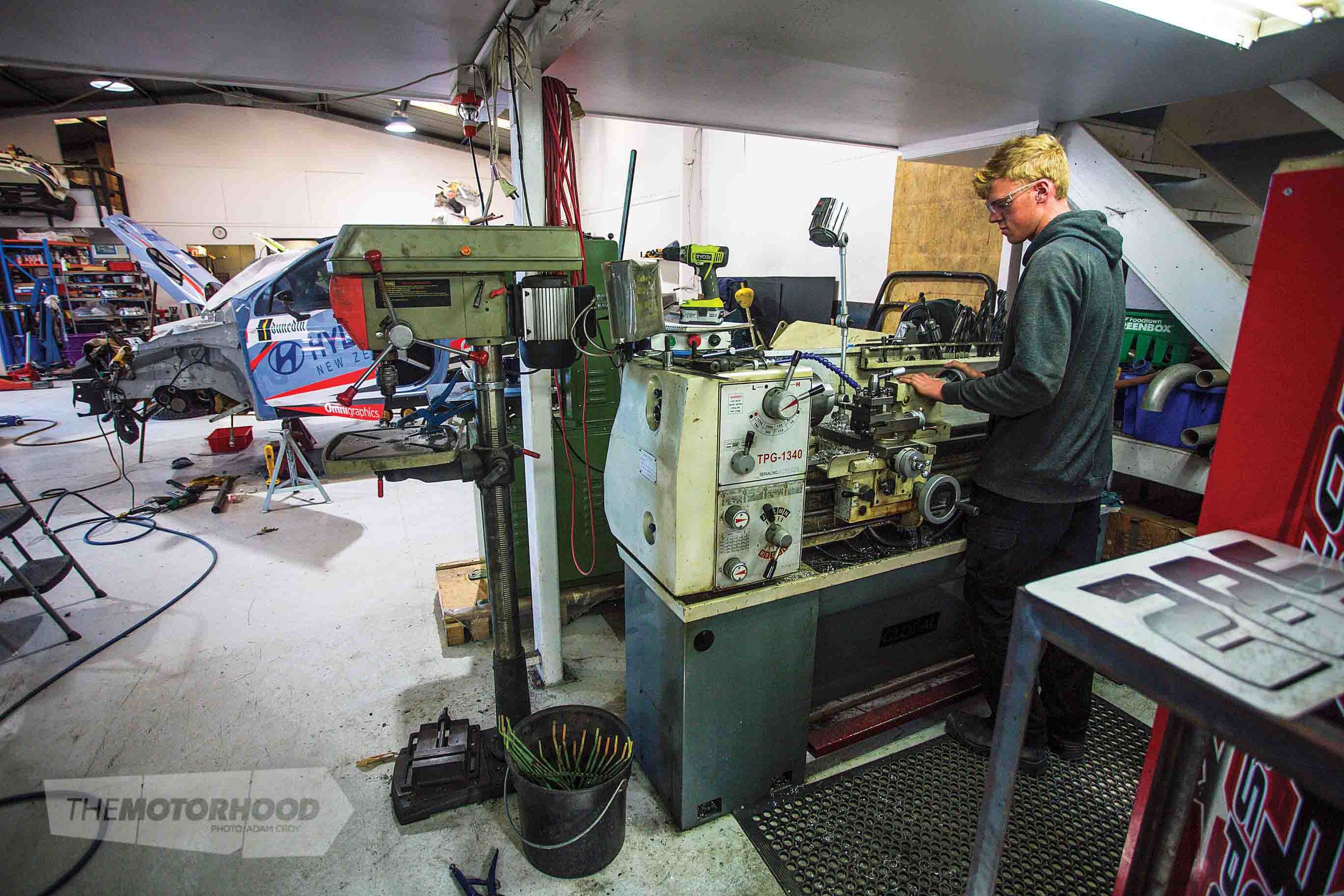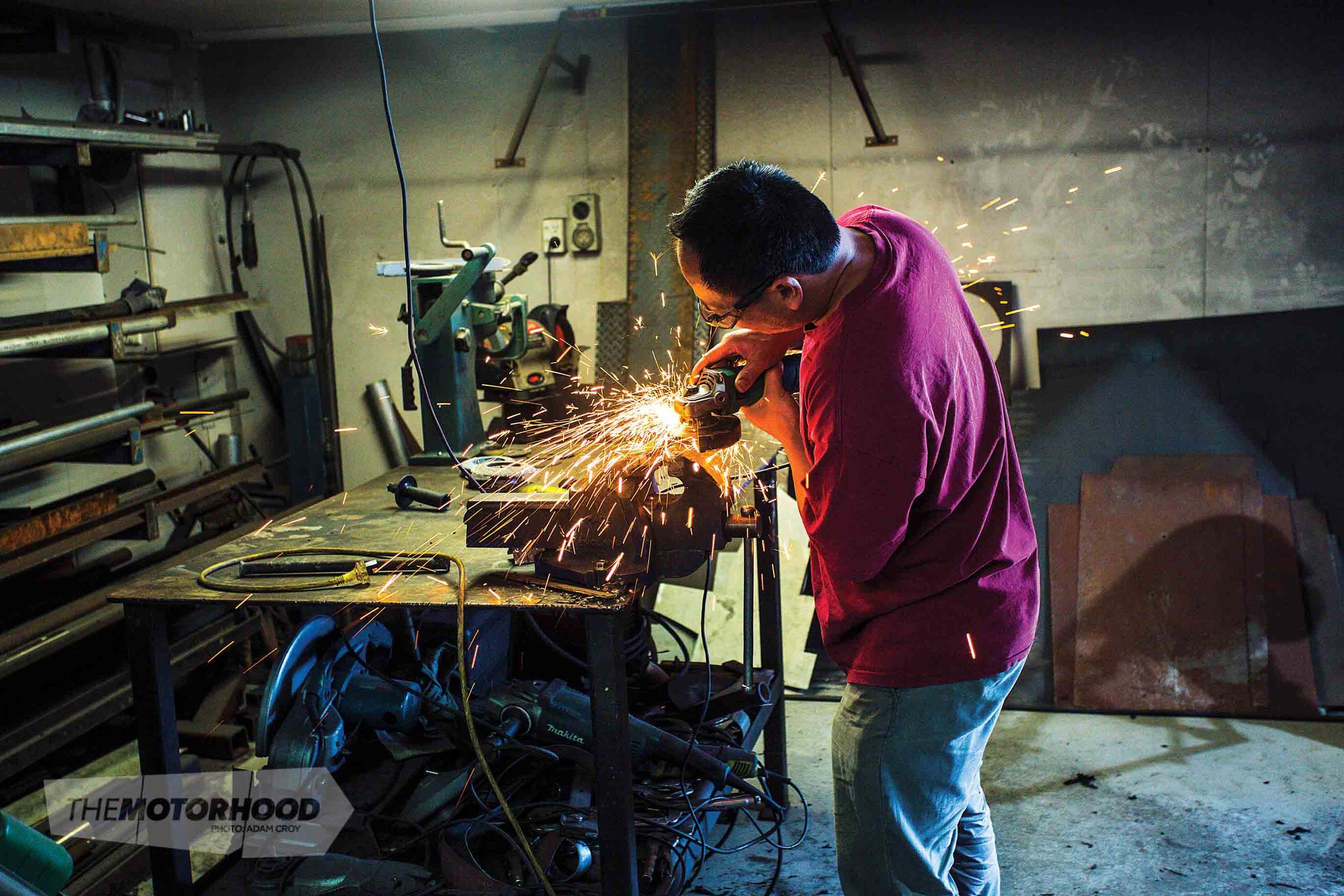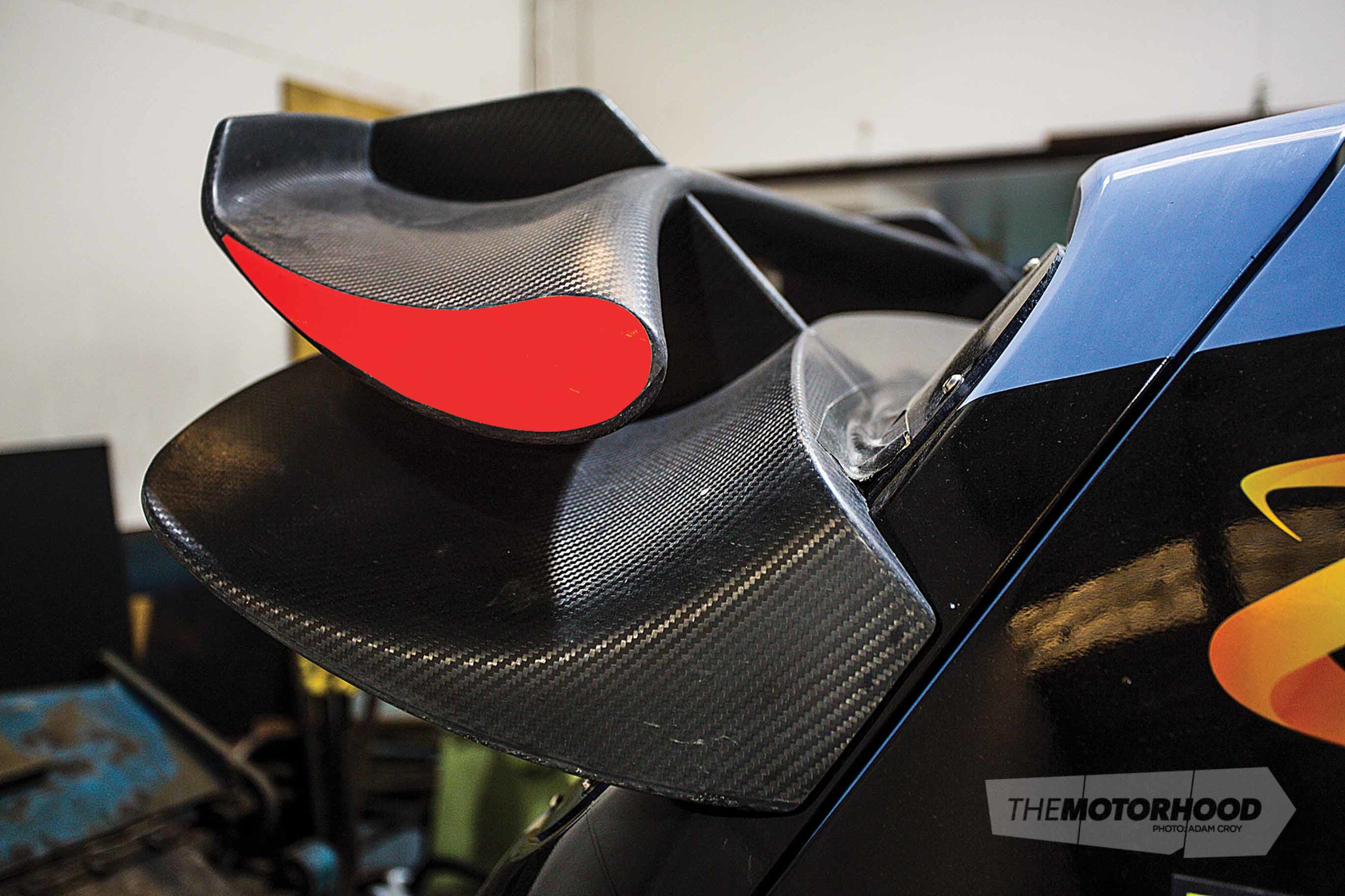data-animation-override>
“We go inside Force Motorsport, home of New Zealand’s newest rally cars”
Competing at the top tier of rally competition in New Zealand is not easy. Rally at the elite level is an expensive sport, it’s brutal on components, and your next big crash is only ever an incorrectly made–split-second decision away. Building a car to contest such a championship in such an unforgiving sport has historically been a pricey exercise; now, this has been compounded by high maintenance costs due to rules dictating the use of factory components not suited to rallying’s harsh environment and race parts permitted from only one supplier, resulting in a monopoly.
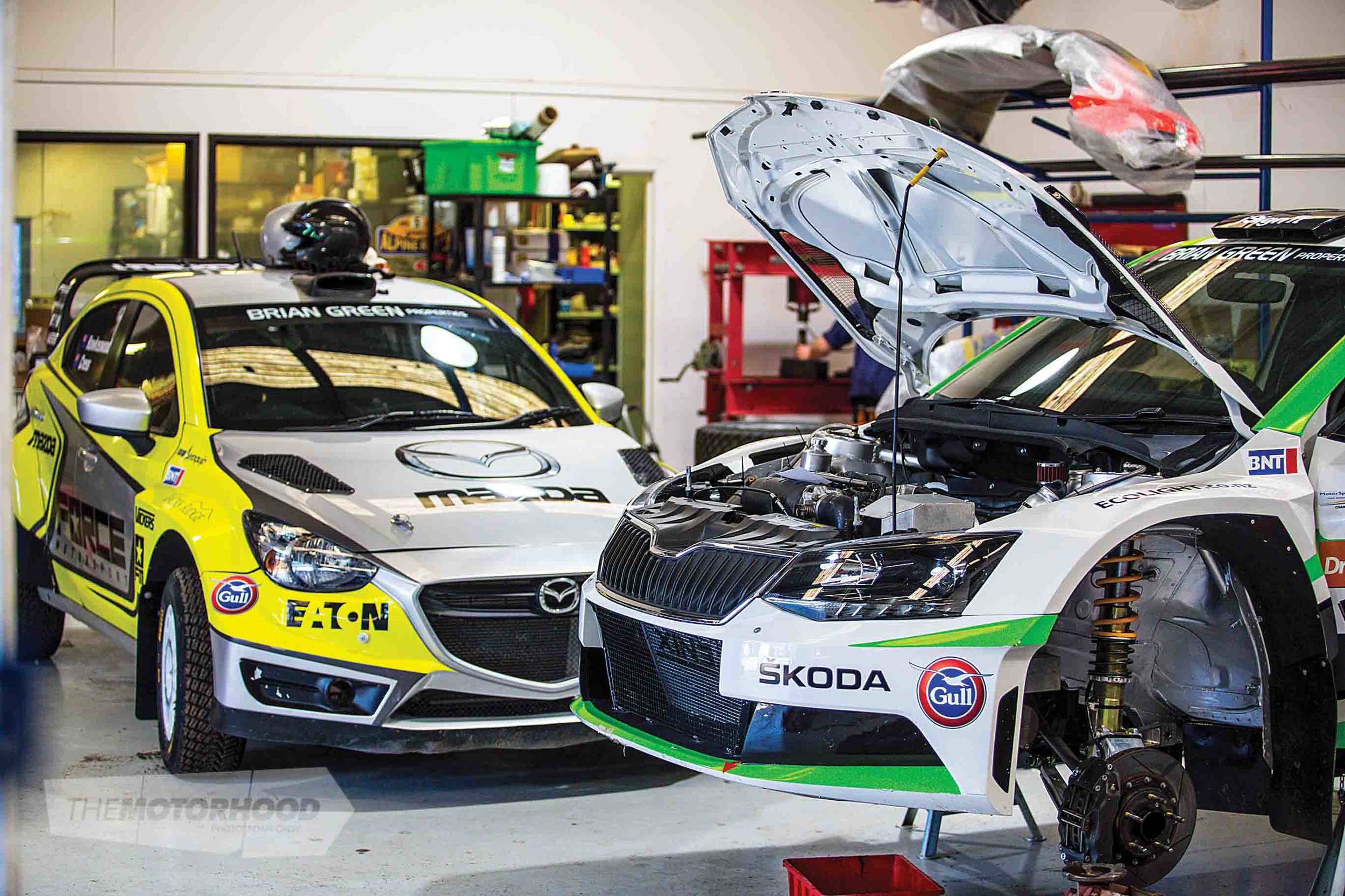
But there were those who were not content with the status quo — guys like passionate gravel devotees Andrew Hawkeswood and Norm Soo of Force Motorsport, who decided to rewrite the rule books on what a rally car should be, so began producing their own world-class cars from a small workshop in South Auckland. Their new-generation AP4 machines are New Zealand designed, built and produced, removing the heavy reliance on overseas suppliers, in a quest to bring the costs down for their own, and other teams.
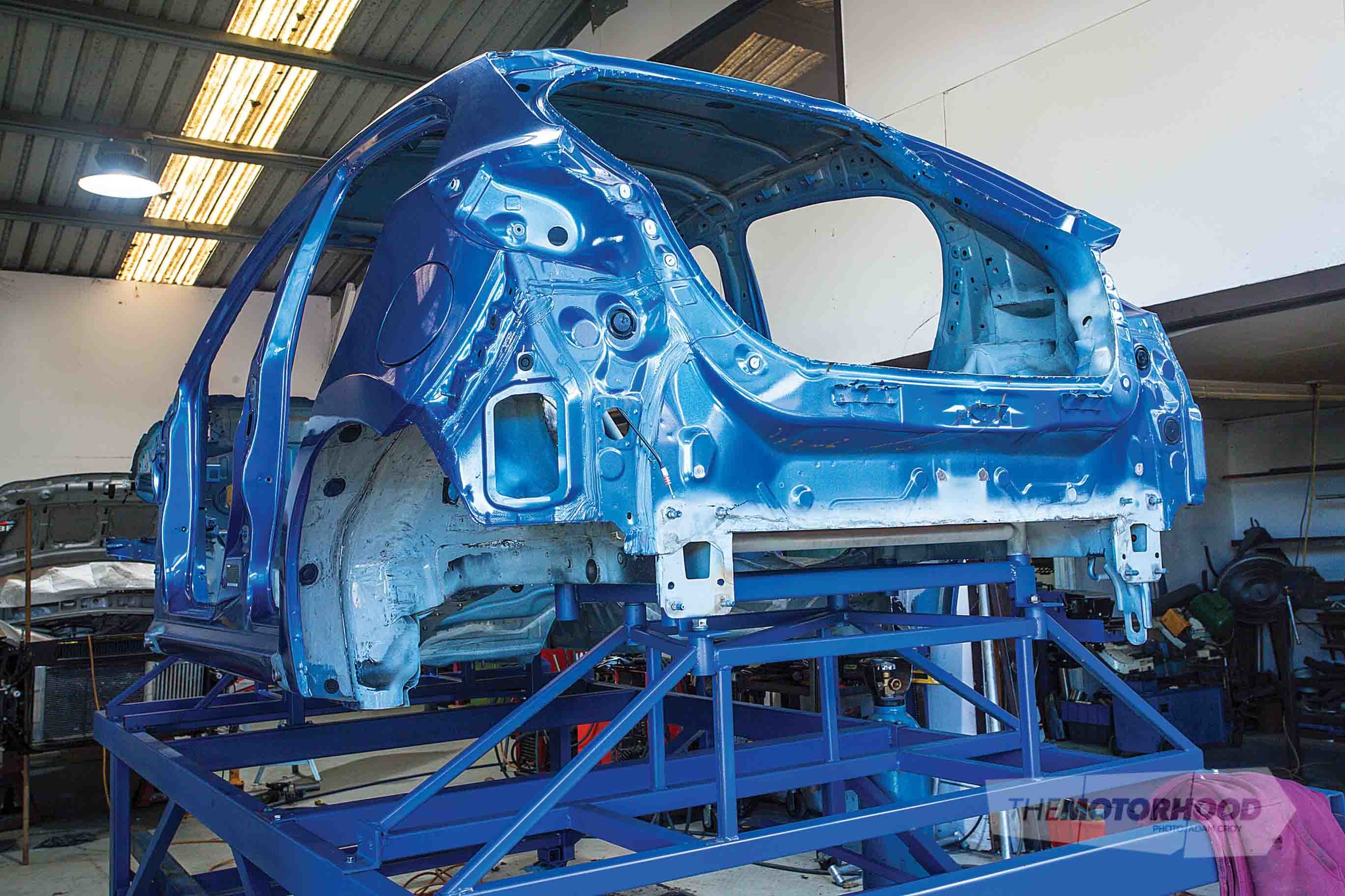
The team developed a large jig that most medium-sized shells can be fitted to, to have the subframe pickups welded in place. It’s a bit of a reverse engineering project, in which the shell is made to fit the subframes and associated components, rather than vice versa, as is traditional. Originally built around the Mazda2, which shares the same floor as the CX-3, it’s an ideal fit for a rally car with large wheel arches and a big tunnel. Fitting the suspension to the likes of Hayden Paddon’s Hyundai shell required a bunch of extra work, but having now built a Skoda, a Hyundai, and a Mazda using this system, there is scope for a range of other models around this size.
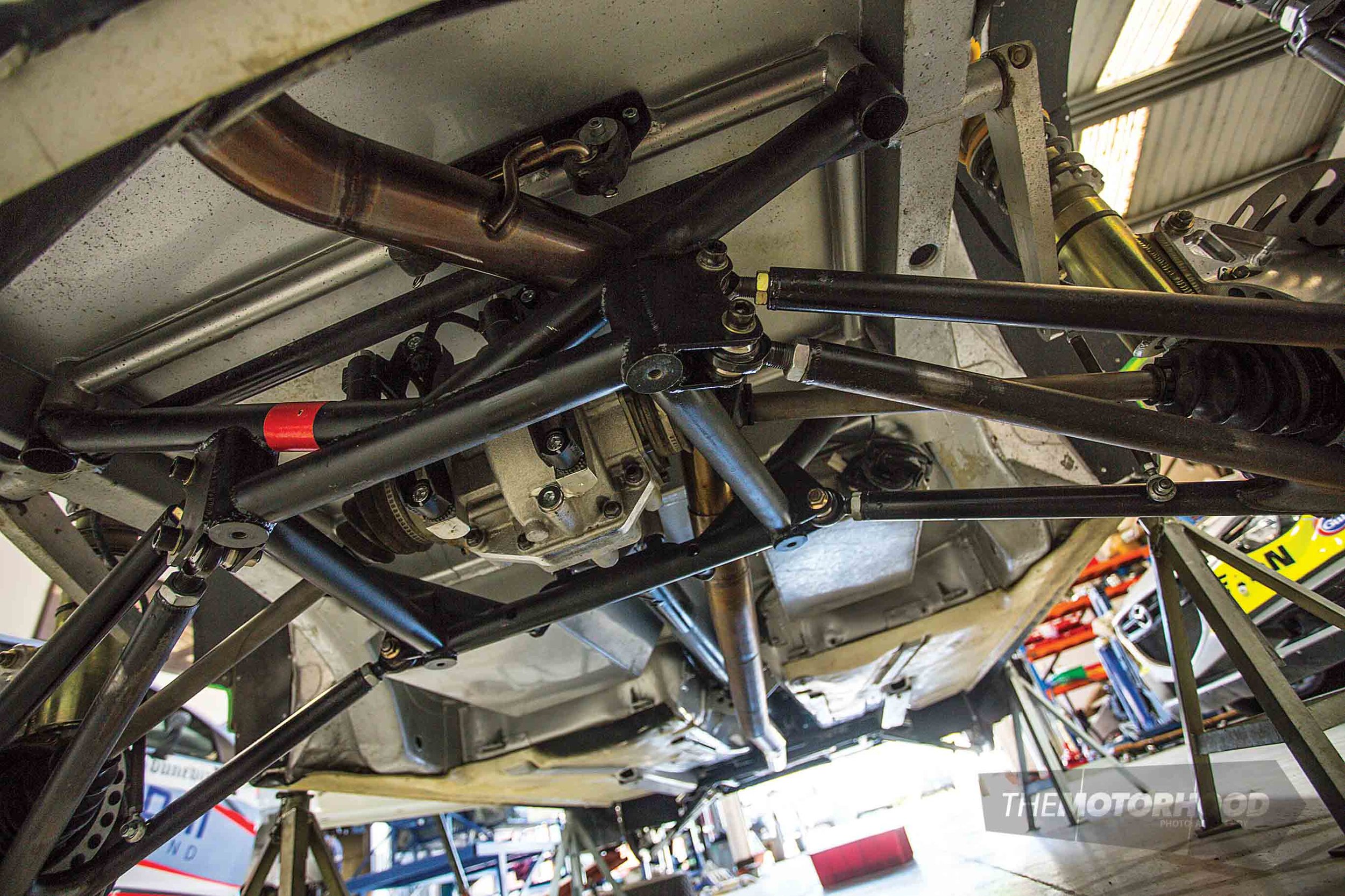
Bolted to these pickups is a pair of chromoly subframes and suspension components designed in-house and either built in-house or machined by another local business. The large billet uprights with custom 4140 hubs are comparable to what current World Rally Championship (WRC) machines run, although the Kiwi versions use a different style of bearing that costs a 10th of the price of the WRC items. The axles are made here and run a modified $45 Land Cruiser outer CV with about $80 of machining, with locally made heat-treated shafts. The billet control arms and chromoly tie rods and sway bars were also engineered by the team. Andrew believes that there is a huge pool of talent in New Zealand, and he’s using it wherever possible.
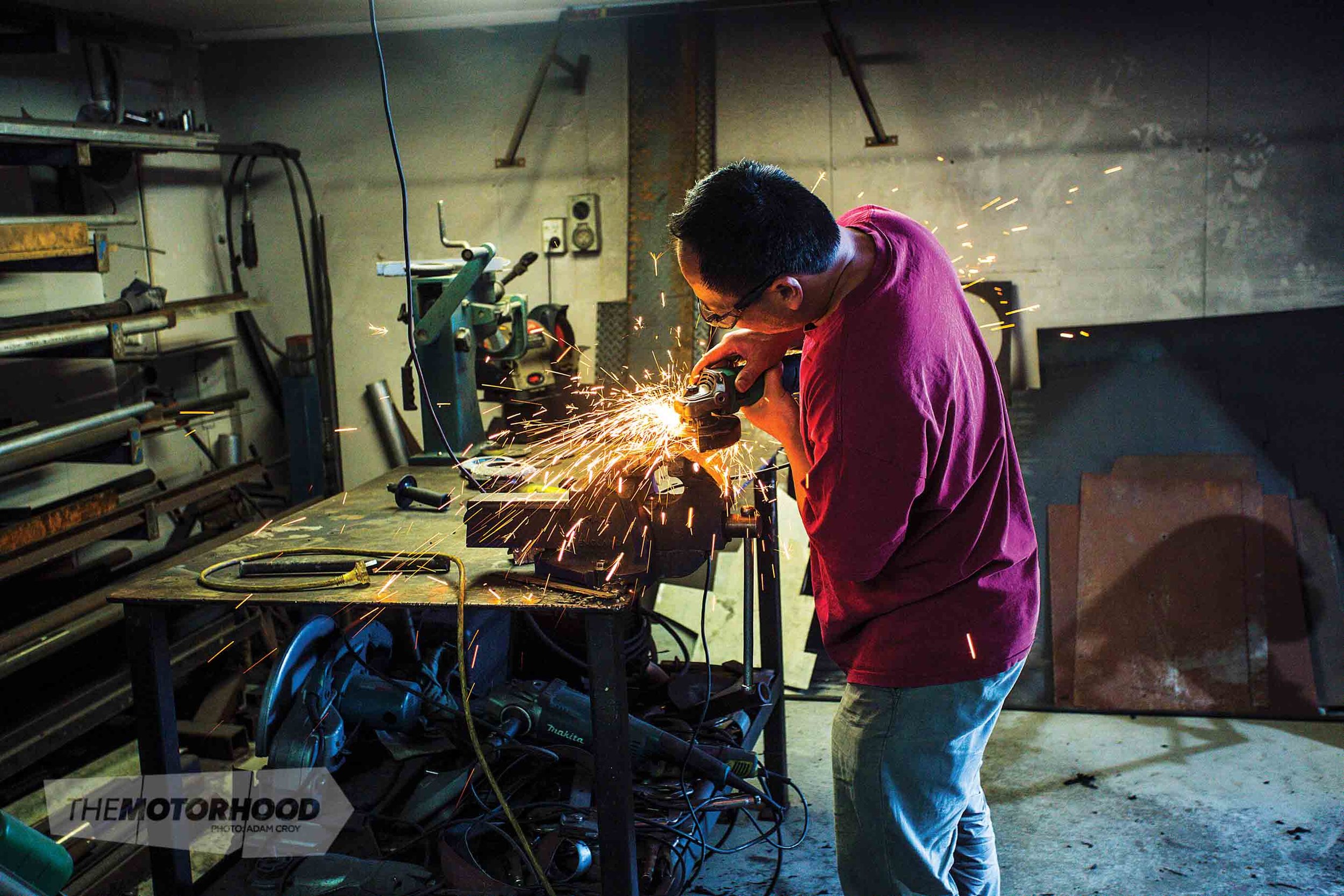
All their parts are put through the rigours of Hawkeswood’s no-holds-barred test procedures, as he explains: “One of the first things we did when we finished the Mazda2 was to back it out of the shed, let it warm up, and then sidestep the clutch at 8000rpm with some sticky tyres on. We did this about half a dozen times, just to see if we could break something and nothing did (touch wood). But it’s pointless building a car if it can’t take that kind of punishment.”
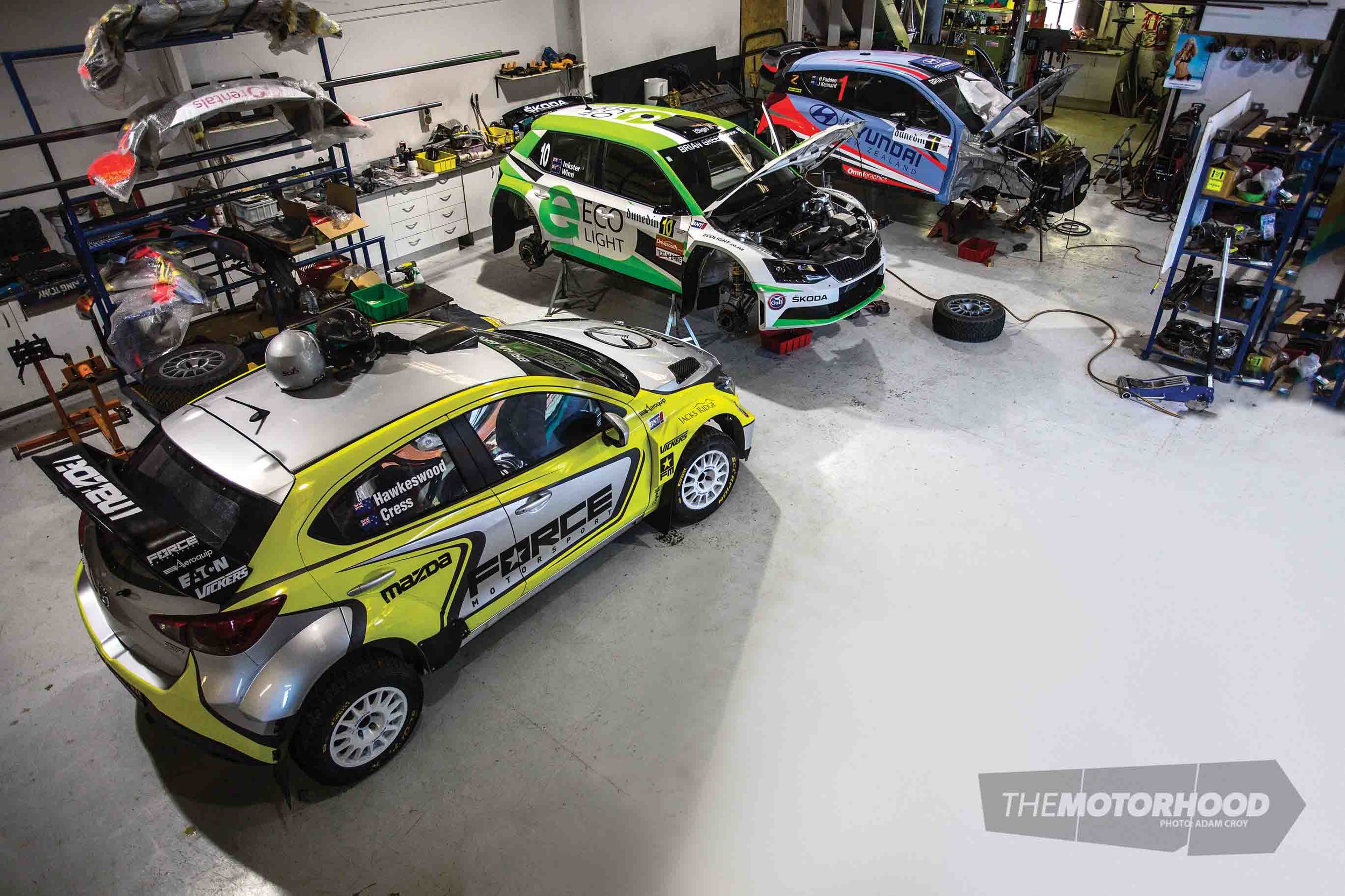
Three of these new-generation machines debuted at the Rally of Otago: a Mazda2 driven by Hawkeswood, a Skoda Fabia driven by Glen Inkster, and a Hyundai i20 with Hayden Paddon at the wheel. All three cars were built in-house at Force Motorsport, the culmination of a three-year project, and will undoubtedly not be the last, with two more already in production.
“We had the original Mazda2 that we based loosely on the Argentine Maxi Car with a Subaru gearbox, so it had a longitudinal engine. There was nothing really wrong with it,” Andrew says, “but, in Argentina, they run them with a Honda 2.2-litre VTEC, so they don’t have the packaging problems with turbos and intercoolers like we do. The other problem we have is that we’re supported by Mazda New Zealand, and the first thing they said when they came out and lifted the bonnet, was that ‘our cars don’t look like that’. It was a really hard sell in that respect.”
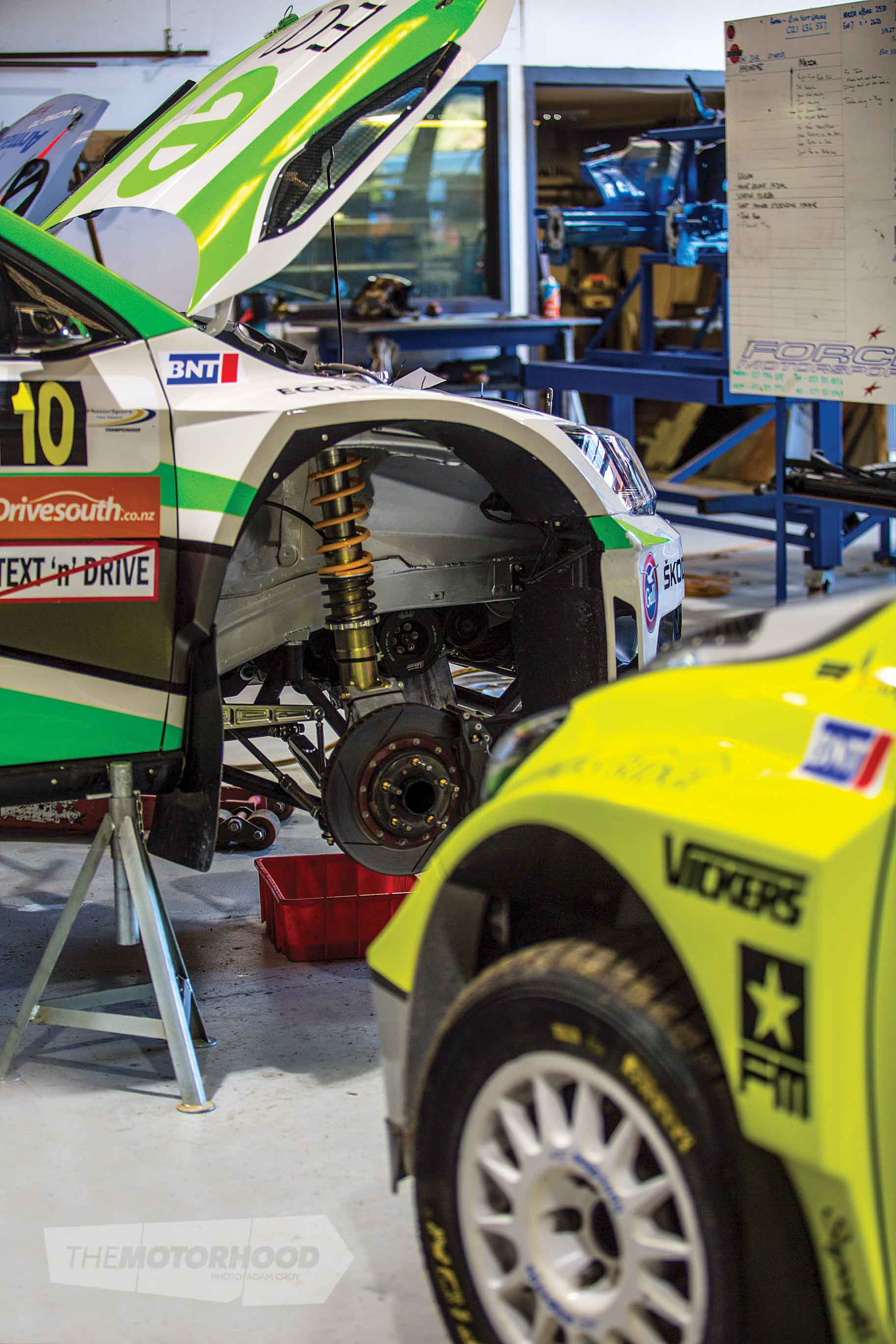
No sooner had that first Mazda been finished than the team began designing a new AP4 machine, one it could commercially market, and, this time, it was a car of the team’s own design and with an east–west engine configuration.
With the support of MotorSport New Zealand, the FIA R5 rulebook was reworked to suit today’s market here in New Zealand, with a lot of rulings about the use of factory components removed and replaced with permission to use locally produced, bespoke components that can handle the punishment.
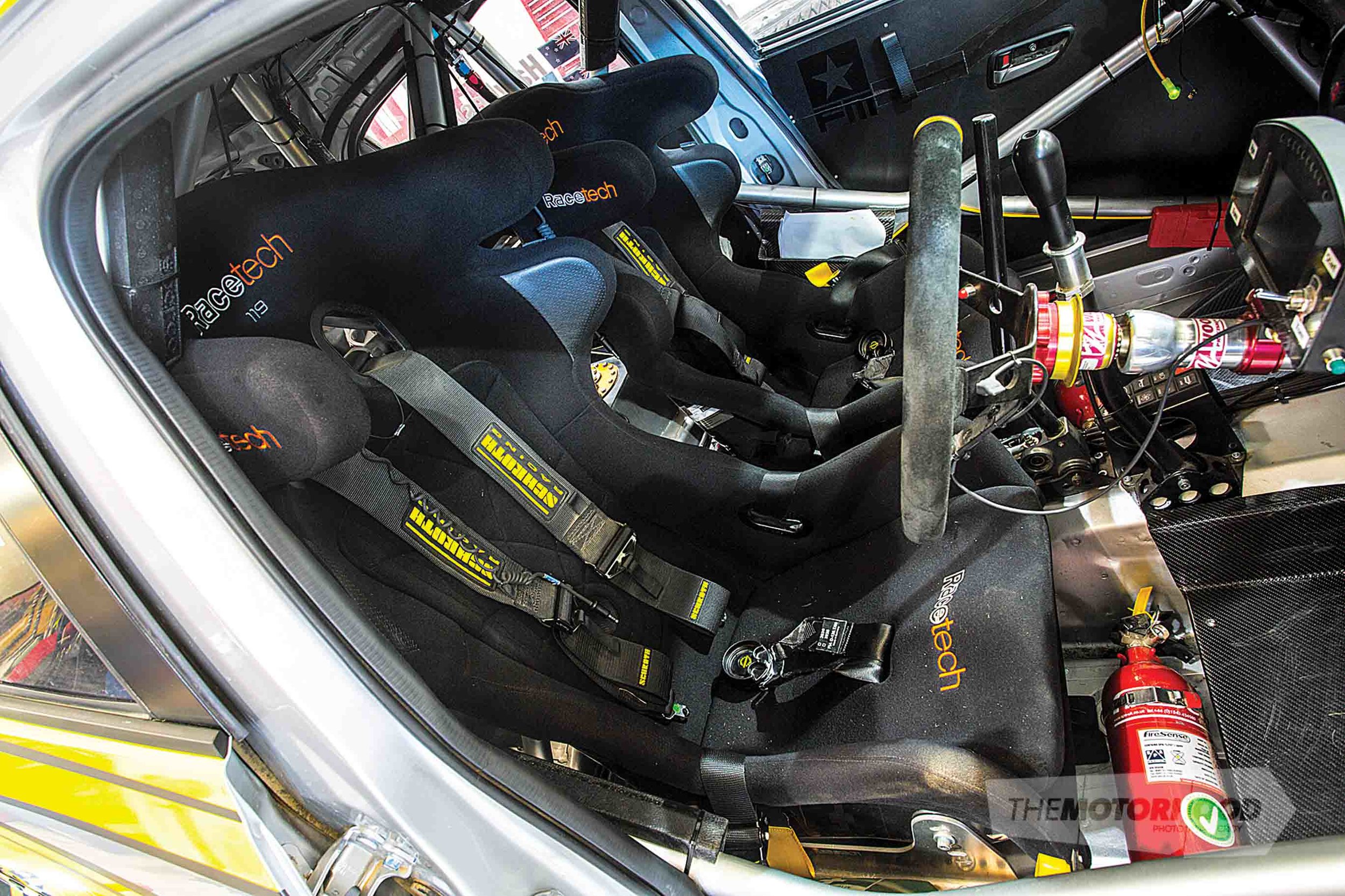
To complete the bulletproof driveline, there’s the rallycross Sadev six-speed sequential rated to 900Nm of torque. These boxes have been behind all of Ken Block’s Gymkhana cars and can take a beating. The kit is imported from the UK with the large rear diff and hydraulic unlocker for the handbrake. However, it comes at a price, and the waiting list is over five months long, so there is scope in the future for Force to begin producing its own box; it’s already been cutting gears, so the next logical step is to cast a casing. But, in the meantime, getting the Sadev to work with each engine simply requires a different engine plate to be bolted to the billet bellhousing. The dream is to basically have a parts catalogue that’ll let you tick the boxes, drop off your chassis, have your picks added, then be able to collect the rolling shell and fit all the other components yourself — parts like the generic cooling-package cradle with an intercooler and radiator. You will simply be able to add different tabs to suit the chassis.
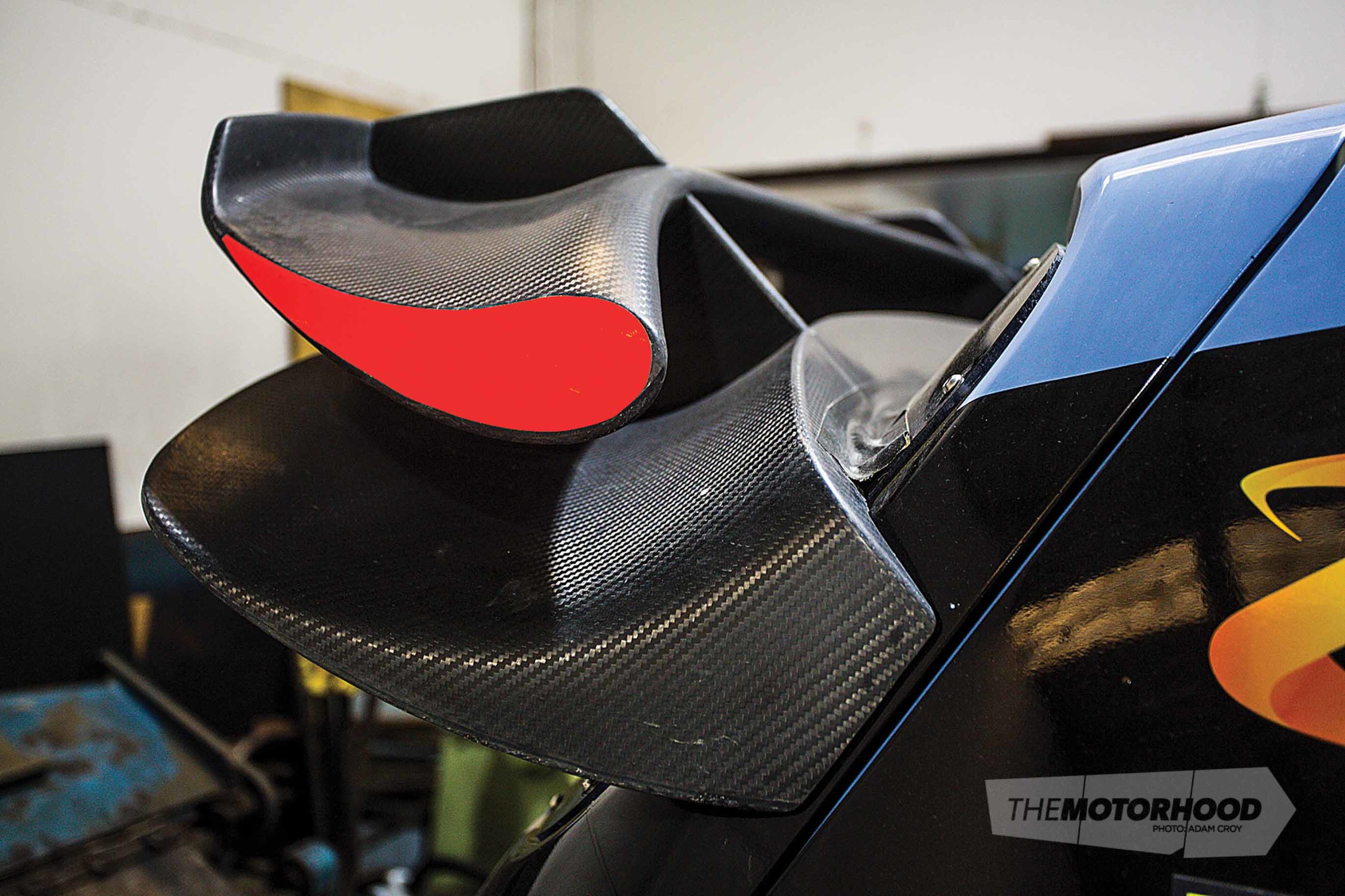
The problem the team is currently working through is the need to make all this work perfectly behind different bodykit designs, as the Skoda and Hyundai, for example, run genuine WRC panel kits, so how they route air is not exactly how Force had planned it. The Mazda2 however, is perfect as its bespoke kit was built in-house with the help of bodykit magician Glenn Turner, who spent a few weeks working some foam to create the wide body. The result is a car that would not look out of place in WRC. Hawkeswood is a firm believer in bringing the show back to rally and having good-looking cars is one of his top priorities.
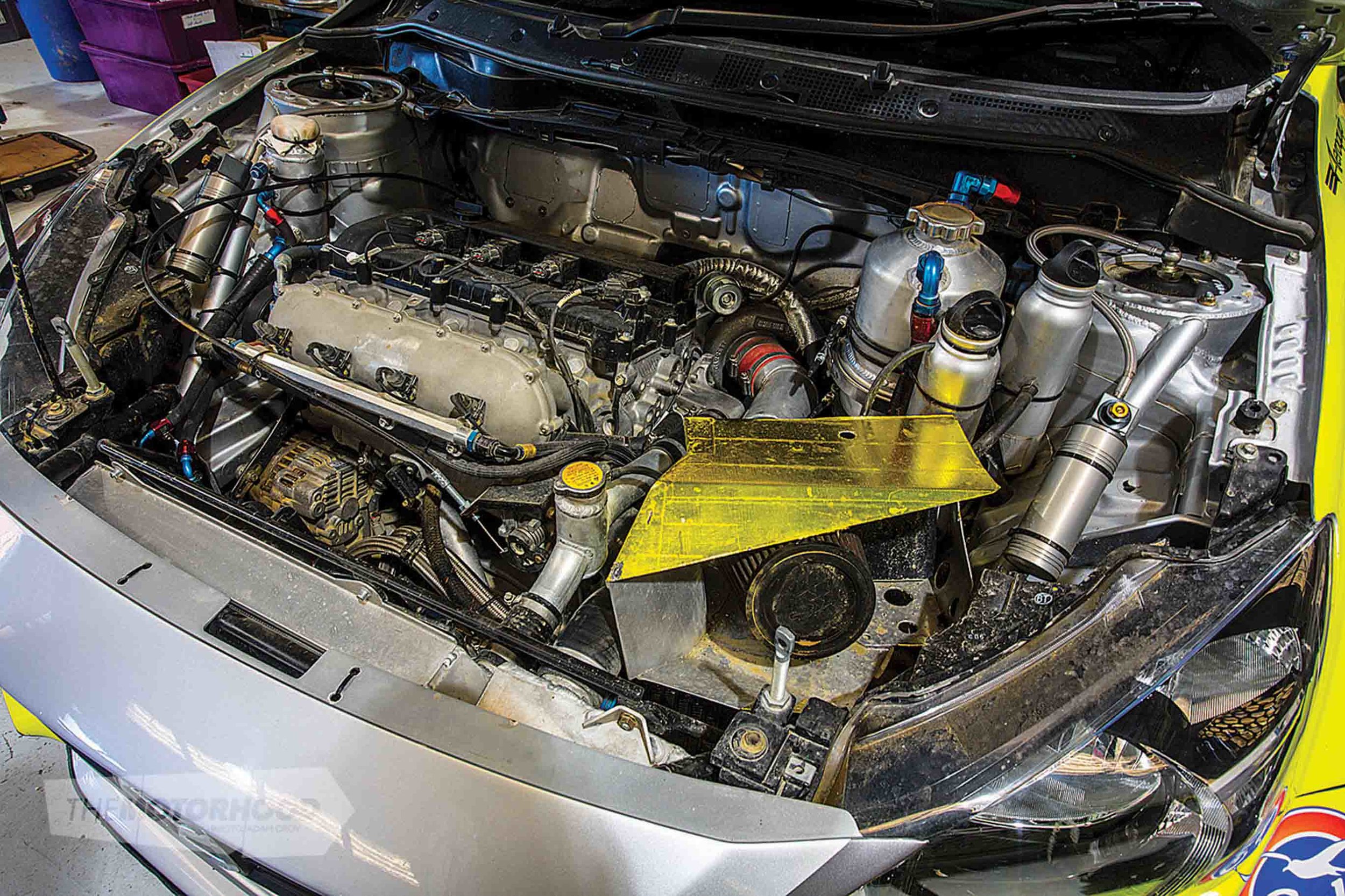
They also need to sound good. You should be able to pick who is flying through the forest towards you by the crackle of their exhaust note, something that’ll be easy with these three cars. The Hyundai runs a Sonata-based 1800cc and the Skoda runs an Audi 1800cc built in the US. All three are equipped with manifolds built in-house and a Garrett GTX28/60, stainless exhausts, and full MoTeC electronics package with a generic loom. The Mazda uses a stout-sounding Duratec 1800cc engine, the same one that the old Ford Focus ran in WRC, albeit built in-house by Norm. Although it makes slightly less torque than the WRC version, the price difference made the choice a no-brainer — pricing up the new Ford Ecotech WRC engine at M-Sport won’t give you any change from $250K.
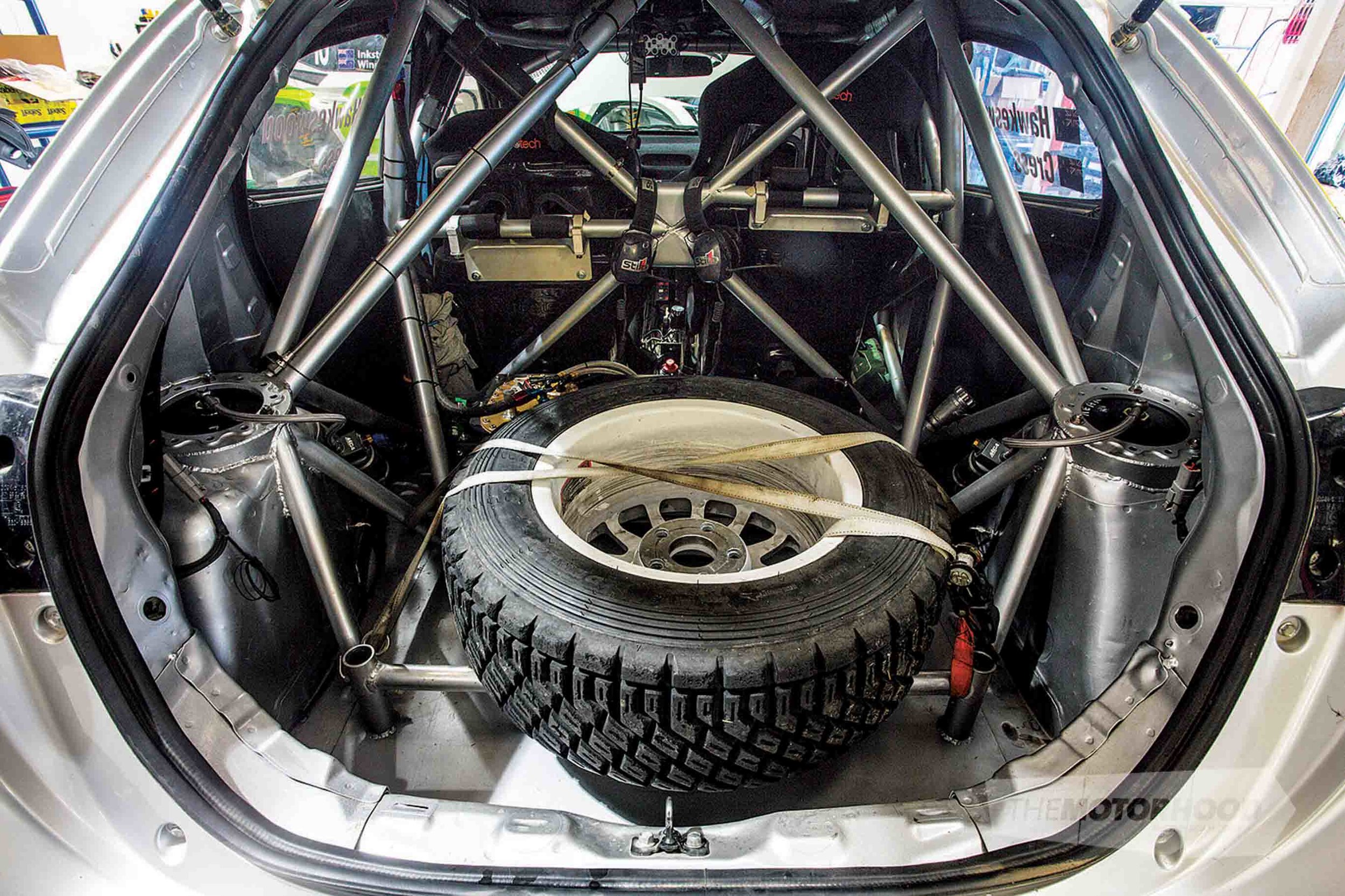
The team will soon begin to develop a joker engine combination, one that runs generic components in a ready-to-run package for around 20–25K. It’s all part of cutting costs and providing reliable options for teams. Andrew says, “One thing that we learned a long time ago was if you buy, say, a Mitsi engine, and it has an alternator mounted in a certain place, there was probably 1000 hours with a team of engineers making sure that it would work and not vibrate. Sometimes, you mount a component somewhere, and you just don’t know what will happen with reverberation and all that type of stuff. All of a sudden, the alternator wire starts snapping, or something … stupid like that. So, it’s just stuff like that which makes it hard for the average punter building something in the garage, to be able to make sure it’s all aligned properly and going to last the season.”
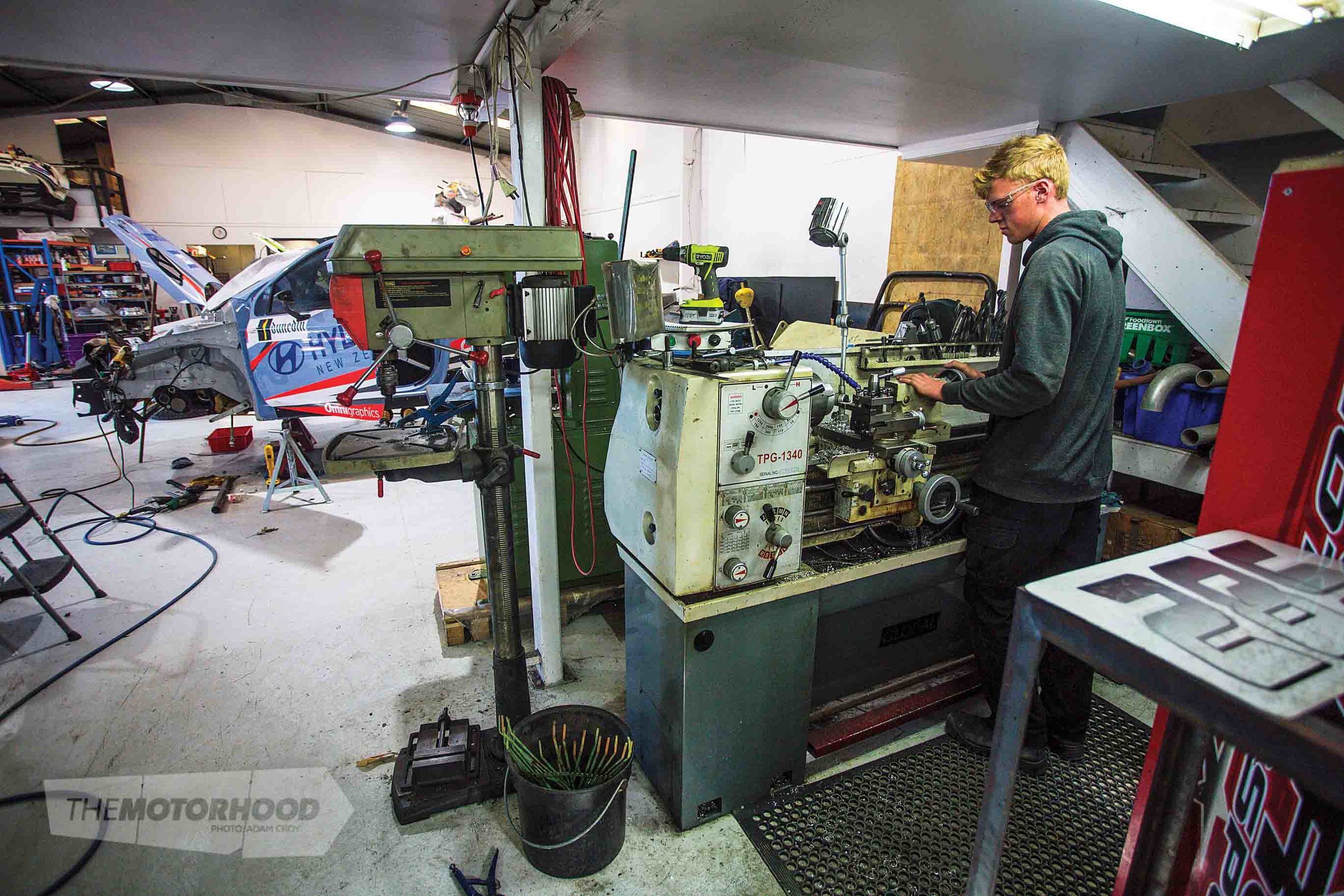
It is still early days for the project, although, with only one rally down, the interest from local and international teams is huge. Hayden walked away with the win in Otago, and all three cars made it through the event without major issues. It’s a new dawn in New Zealand Rally, crowd numbers are up, and the number of new cars that showed up was very encouraging.
So, when was the last time you trekked to a stage and witnessed some of the best driving you will see in New Zealand? Perhaps it’s time you made the effort once more.
This article originally featured in NZ Performance Car Issue No. 234. You can purchase a print copy or digital copy of the magazine down below:
